Matcha Coffee Recipe (Dairy-Free)
What is cool and creamy, sweet and earthy, and gives a powerful health punch? Matcha coffee! If you love a good latte and want to make it as healthy as possible without compromising taste, this Matcha Coffee recipe is for you.
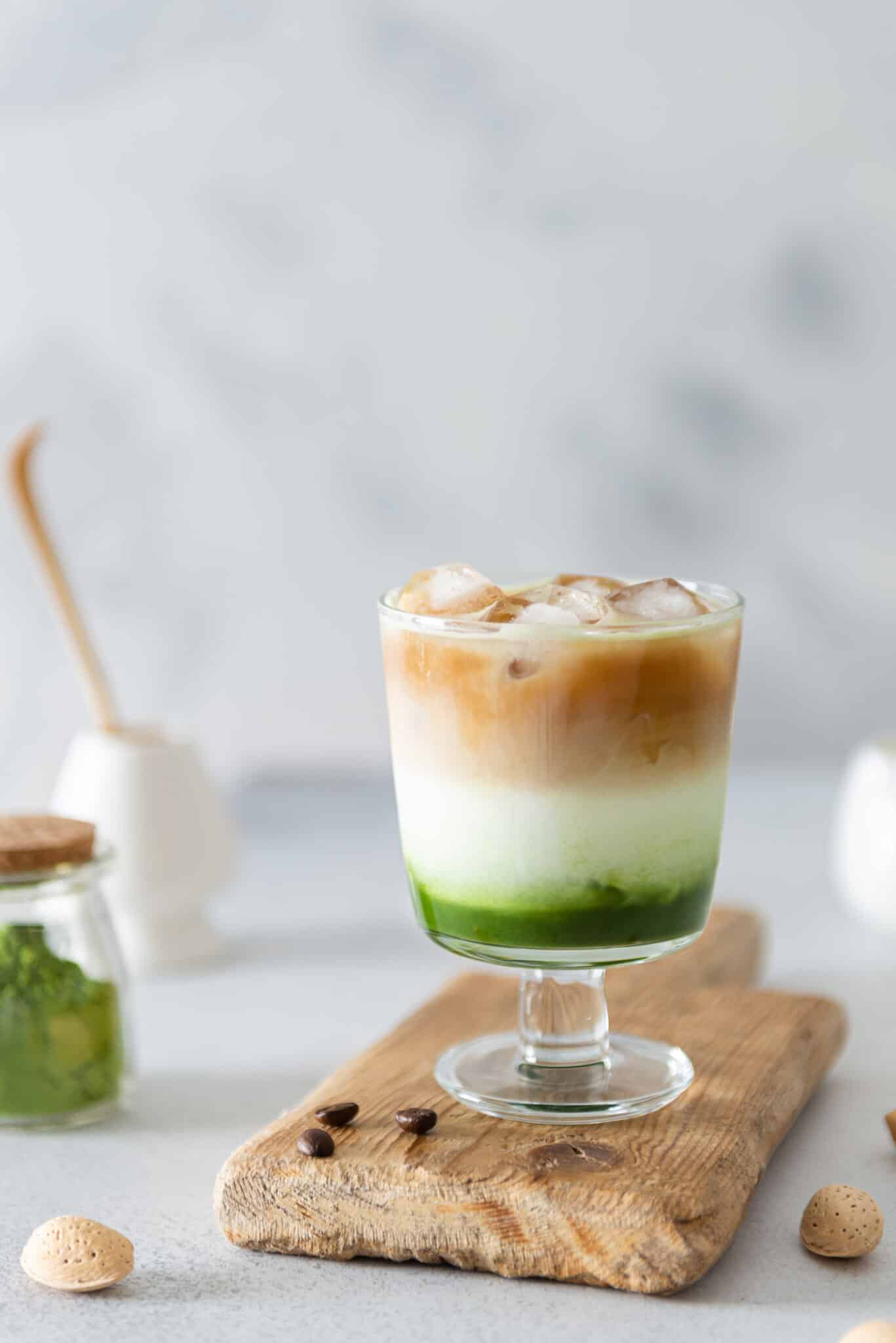
This tasty, layered, matcha coffee recipe is made dairy-free and sweetened without refined sugars. With an option to add one or two shots of espresso, you can choose how much caffeine boost you want in your matcha coffee.
Once you get the hang of slowly layering the ingredients, it looks stunning in a tall transparent latte mug with the lovely bottom matcha layer. This drink will be your new go-to beverage for a weekend brunch with friends or a special mid-week treat. It’s also great to share on social media because it’s so pretty!
This matcha coffee recipe is a two-in-one solution. It’s a refreshing drink that will give you an energy boost.
Why You Need This Recipe
- Matcha coffee is a great way to start the day. It will give you a powerful energy boost and jumpstarts your morning with the added health benefits of powerful antioxidants. Matcha is renowned for offering more of a sustained energy.
- This matcha coffee recipe makes a balanced drink with just enough sweetness to offset the earthy flavors of matcha. The creaminess of the plant milk makes it a rich and comforting drink.
- You can adapt it by adding different flavor options and experiment with different types of plant milk. Or, you can use regular milk if you aren’t on a dairy-free diet.
What You’ll Need to Make This Recipe
This recipe is so adaptable that most kitchens will have everything you need to make it with minimal effort. Here’s a complete list of equipment you’ll need and some suggestions for substitutes.
1. Transparent latte mugs
Chilled matcha coffee is layered and looks great in a tall, transparent latte mug. The vibrant green of the matcha makes it interesting and just so pretty.
Any tall glass will also work if you don’t have a latte mug. It’s a chilled drink using iced coffee, so you don’t have to use a heat-proof mug. You can even use a parfait glass or trifle bowl, if you like.
2. A Moka Pot or French Press
Use your favorite coffee-making method to brew the espresso you need in this recipe.
If you enjoy coffee with a rich and complex flavor profile, you may already have a Moka pot in your kitchen. It’s a fast and effective way to make strong espresso. You could also use a French press, percolator, or the pour-over drip method, which only requires a cone and filter papers.
You can even use instant coffee, if you prefer.
See my list of the best coffee for a French press.
3. Whisk
Matcha is a very fine powder so whisking it is essential to ensure it’s clump-free.
Don’t have a matcha whisk? No problem! You can use a milk frother, whip your matcha tea powder mix up in a blender, or use an immersion stick.
For best results, sift the matcha powder into the water before whisking it.
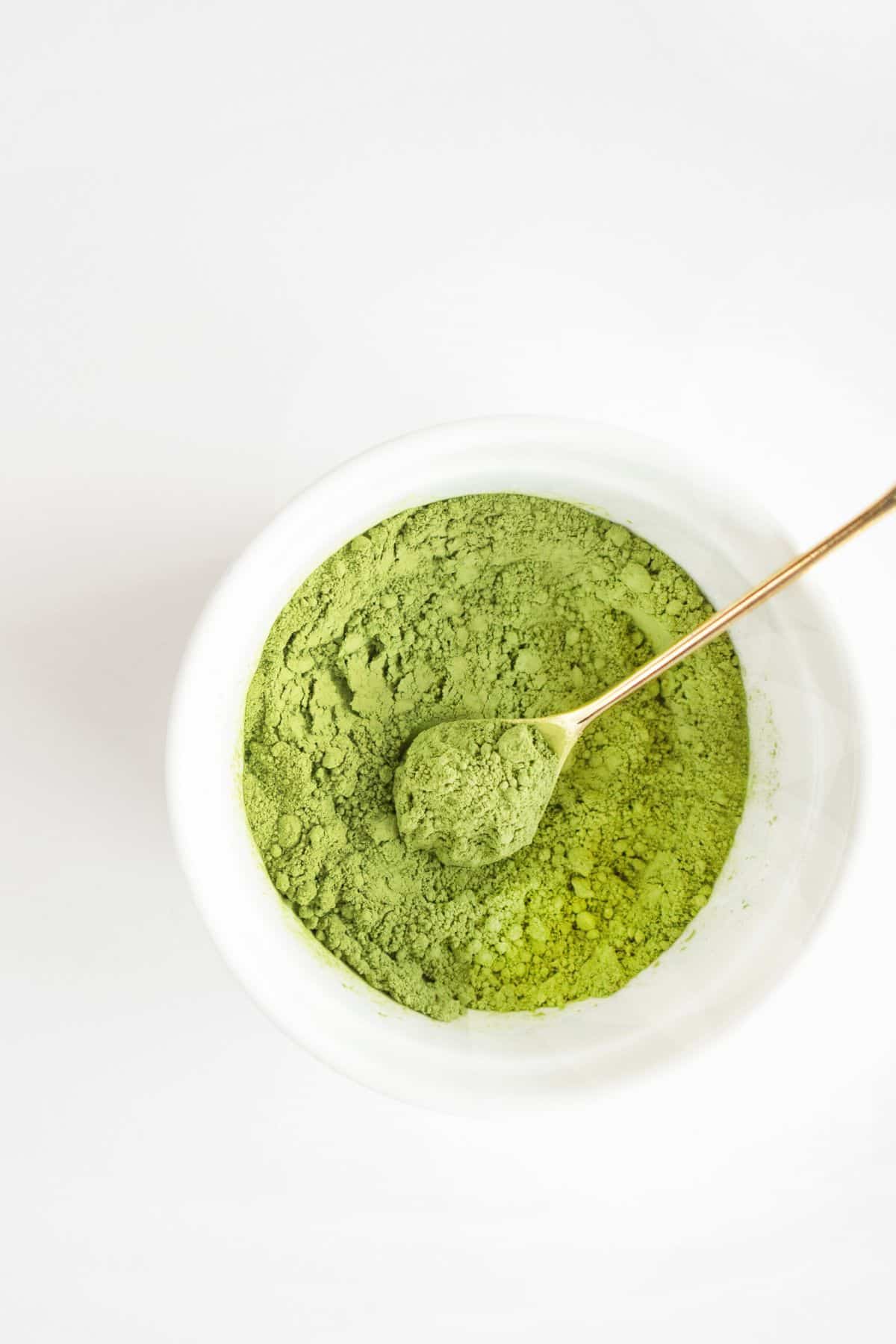
Ingredients and Substitutes
Matcha coffee is great on its own, but if you want to play around with flavors, there are many options to experiment with. Here are some ideas to change it up and some substitutes you could consider.
Matcha Powder
There are two main types of matcha powder; pure matcha and matcha with added extras like sweeteners. Stick to the purest matcha with no extra stuff!
You may notice that there are different grades to matcha powder; Ceremonial grade, Premium grade, and Culinary grade. It’s up to you what you choose to use. Find matcha online or sold at your local coffee shop or Asian market.
- Ceremonial-grade matcha is the highest quality but comes at the highest price tag. It’s the best choice if you have matcha tea without other ingredients.
- Premium grade matcha works well with lattes and is less expensive than ceremonial matcha.
- Culinary matcha is what you’d use for cooking and baking. It’s the most reasonably-priced matcha but may not be suitable for matcha coffee or lattes.
I like matcha with a deep, vibrant green color. It tastes a little more earthy but also smoother. My favorite brands are the Republic of Tea Organic Japanese Matcha Green Tea Full-Leaf Powder or the Jade Leaf Organic Matcha Green Tea Powder.
Learn more about the health benefits of matcha including its ability to help increase alpha waves, focus and concentration. Or, go really deep into match and try these Matcha Brownies!
Coffee
Whether you use a Moka pot, French press, or a coffee machine to make your espresso, the brewing method is your personal preference. Everyone has their favorite blend! Feel free to use whatever espresso you enjoy.
You can also use regular brewed coffee, if you prefer. See my list of the best organic coffee brands.
Something to note is that coffee and matcha both contain caffeine, so you’ll get a double shot of it. If you like coffee’s flavor but prefer a little less caffeine, you can use decaffeinated coffee. See my list of the best organic decaf coffee.
You’ll get a healthy energy boost from the matcha and double up on your antioxidant intake anyway!
Coffee and matcha both have high levels of antioxidants which have incredible health benefits. These substances help protect our bodies by neutralizing unstable molecules called free radicals. When too many free radicals build up, they can seriously damage our cells and contribute to cancer, diabetes,, and heart disease.
If you are a big coffee fan, then try these Coffee Donuts.
Plant Milk
Choose plant milk that’s pure without any sweeteners or added extras. I use almond milk in this recipe because it deepens the earthy taste of the matcha. If you prefer a slightly less earthy taste, try a barista blend of almond milk, creamy oat milk, or even light coconut milk.
To make the matcha shine through, go for soy or lighter oat milk. And, don’t forget, if you prefer cashew or any other plant milk, give it a go! Most types of milk will work with this recipe.
And, if you aren’t on a dairy-free diet, you can use regular dairy milk including whole milk, low-fat milk, half-and-half, or even heavy cream.
Maple Syrup
The smokiness of maple syrup is the perfect touch to the creamy milk, bitter coffee, and earthy matcha. Amber maple syrup is my go-to for most recipes, but it should work if you prefer lighter or darker versions. Start with a little, especially if you use creamy plant milk that is naturally sweet.
If you don’t have maple syrup or prefer honey or another natural sweetener, use that instead or omit the sweetener. Some people love the deep, satisfying flavor of coffee, matcha, and milk without any sweetener. I like to add a tiny amount of maple syrup to my matcha coffee; it’s more for the flavor than the sweetness.
Note: When you don’t use a sweetener, it’s more challenging to layer this drink. See below for tips on how to do that, and remember, practice makes perfect!
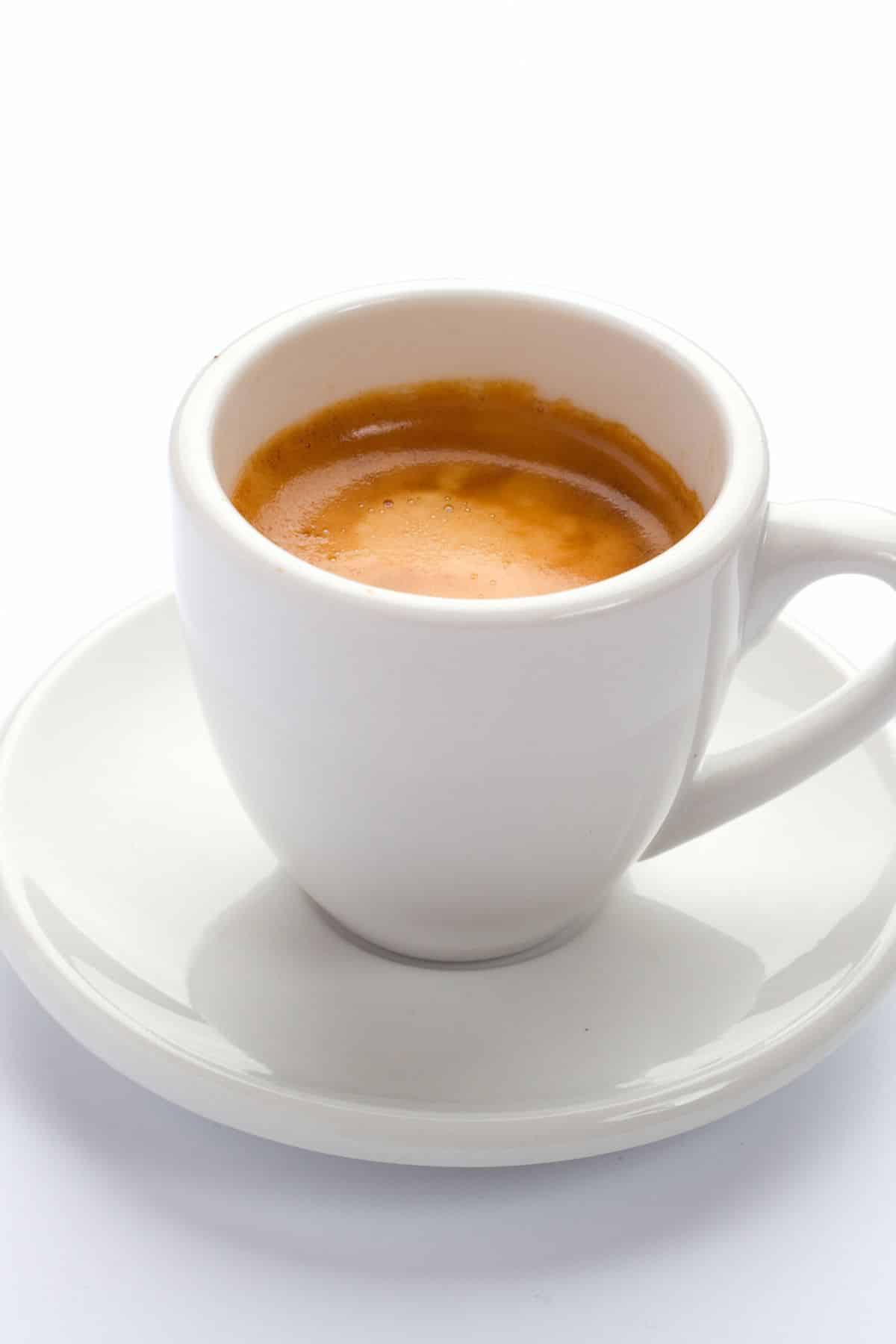
Recipe Steps
Step One
Brew the espresso and let it cool to room temperature.
Step Two
Add the matcha powder and sweetener to the warm water and whisk thoroughly. Ensure there are no clumps of powder left.
Step Three
Add the matcha mixture to the bottom of the cup, and add the ice (leave out the ice if you want a hot matcha coffee).
Step Four
Slowly pour the milk over the matcha layer. For best results, slowly pour each layer over the back of a spoon.
Step Five
Your next layer is the espresso. Again, slowly pour the milk over the back of a spoon.
Serve, and enjoy!
I hope you agree that this is one of your new favorite matcha drinks and is better than just a plain cup of matcha. It’s like pairing the best of both worlds: coffee and match together.
Recipe FAQs
Matcha is a powdered type of young green tea leaves. It’s grown in shady areas and harvested early. It has tremendous health benefits ranging from improved heart health to cancer prevention. It may even help promote brain function and promote weight loss.
Yes, it does. Every teaspoon of matcha has around 68 grams of caffeine. A cup of coffee contains roughly 100 grams of caffeine.
In moderation, matcha is suitable for kids. However, this recipe contains caffeine from the matcha and the coffee. This recipe likely contains too much caffeine for children, unless you use decaffeinated coffee, matcha, or both. See more tips below on how to make a kid-friendly version.
Yes absolutely! It will be more difficult to make the layers. You may end up with a matcha espresso fusion. If you want to make a hot version, use hot water to mix the matcha powder and don’t let the espresso cool before mixing the matcha and coffee together.
I like the Republic of Tea Organic Japanese Matcha Green Tea Full-Leaf Powder or the Jade Leaf Organic Matcha Green Tea Powder. Both are quality brands that are reasonably priced. You may also like my list of the best matcha drinks at Starbuck’s.
Recipe Tips & Substitutions
- If you want to make a kid-friendly version of this recipe, consider substituting the coffee for chicory or carob, and remember to let them have it in moderation! One serving of matcha coffee daily will provide a suitable amount of caffeine for a ten-year-old child, while younger children should only have around half a cup. Be sure to ask your healthcare provider if you have questions about serving caffeine to children.
- You can use regular milk in this recipe if you aren’t on a dairy-free diet.
- Use decaffeinated espresso or coffee if you want to reduce the overall amount of caffeine in this beverage.
- You can leave out the maple syrup or use a sugar substitute to reduce the sugar content, if you prefer (see my list of the best natural sugar substitutes).
- If you want to make a hot version, use hot water to mix the matcha powder and don’t let the espresso cool before mixing the matcha and coffee together.
- Want to make a protein version? Add a scoop of collage powder like in this recipe for Protein Coffee.
- You may also like this recipe for Matcha Cake!
Don’t Miss These Energizing Recipes
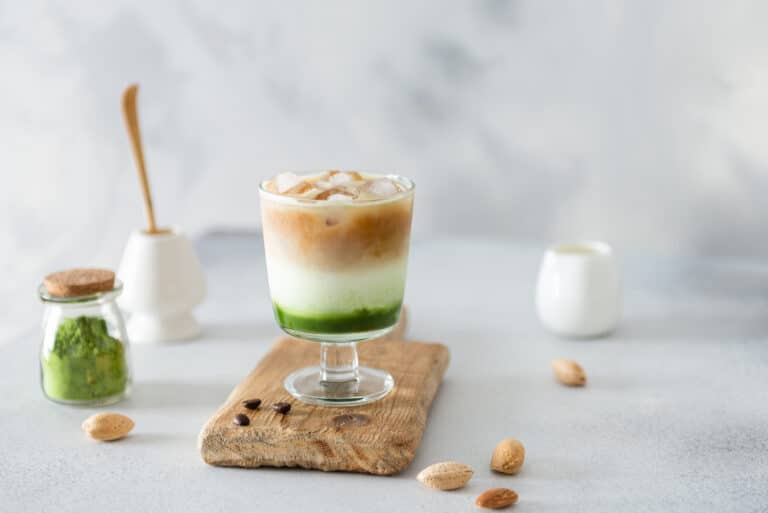
Matcha Coffee Recipe (Dairy-Free)
What is cool and creamy, sweet and earthy, and gives a powerful health punch? Matcha coffee! If you love a good latte and want to make it as healthy as possible without compromising taste, this Matcha Coffee recipe is for you.
- Total Time: 20 minutes
- Yield: 1 1x
Ingredients
- 1 shot of espresso
- 1 teaspoon matcha powder
- 1 teaspoon maple syrup or honey
- 1/3 cup warm water
- 1 cup of ice
- 1/3 cup of unsweetened almond milk (or other plant milk)
Instructions
- Brew the espresso and let it cool to room temperature.
- Add the matcha powder and sweetener to the warm water and whisk thoroughly. Ensure there are no clumps of powder left.
- Add the matcha mixture to the bottom of the cup, and add the ice.
- Slowly pour the milk over the matcha. For best results, slowly pour each layer over the back of a spoon.
- Your next layer is the espresso. Again, slowly pour the milk over the back of a spoon.
- Serve, and enjoy!
Notes
- If you want to make a kid-friendly version of this recipe, consider substituting the coffee for chicory or carob, and remember to let them have it in moderation! One serving of matcha coffee daily will provide a suitable amount of caffeine for a ten-year-old child, while younger children should only have around half a cup. Be sure to ask your healthcare provider if you have questions about serving caffeine to children.
- You can use regular milk in this recipe if you aren’t on a dairy-free diet.
- Use decaffeinated espresso or coffee if you want to reduce the overall amount of caffeine in this beverage.
- You can leave out the maple syrup or use a sugar substitute to reduce the sugar content, if you prefer (see my list of the best natural sugar substitutes).
- If you want to make a hot version, use hot water to mix the matcha powder and don’t let the espresso cool before mixing the matcha and coffee together.
- Prep Time: 10 minutes
- Cook Time: 10 minutes
- Category: Drink
- Method: Stovetop
- Cuisine: Healthy
- Diet: Vegan
Nutrition
- Serving Size:
- Calories: 171
- Sugar: 4 g
- Sodium: 76 mg
- Fat: 5 g
- Saturated Fat: 0 g
- Carbohydrates: 5 g
- Fiber: 0 g
- Protein: 4.6 g
- Cholesterol: 25 mg
Don’t forget to join my newsletter list to get exclusive clean eating recipes and tips. The newsletter is 100% free with no spam; unsubscribe anytime.
About the Author: Carrie Forrest has a master’s degree in public health with a specialty in nutrition. She is a top wellness and food blogger with over 5 million annual visitors to her site. Carrie has an incredible story of recovery from chronic illness and is passionate about helping other women transform their health. Send Carrie a message through her contact form.


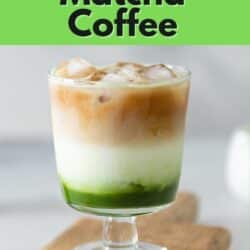
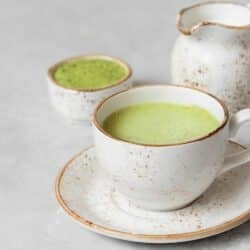


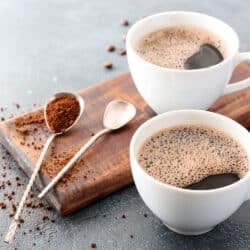



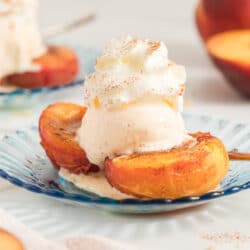

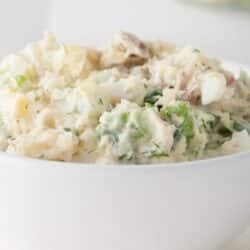
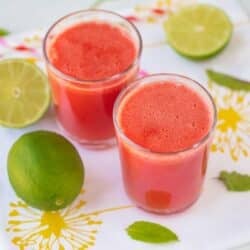
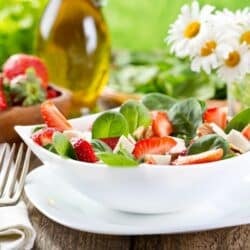

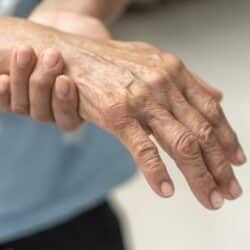
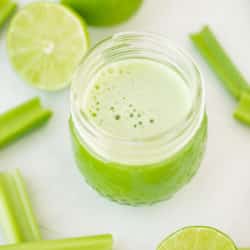

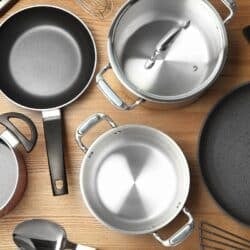
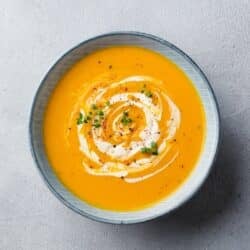


Such a stunning recipe to serve friends at brunch! I like to make it for myself on special occasions.